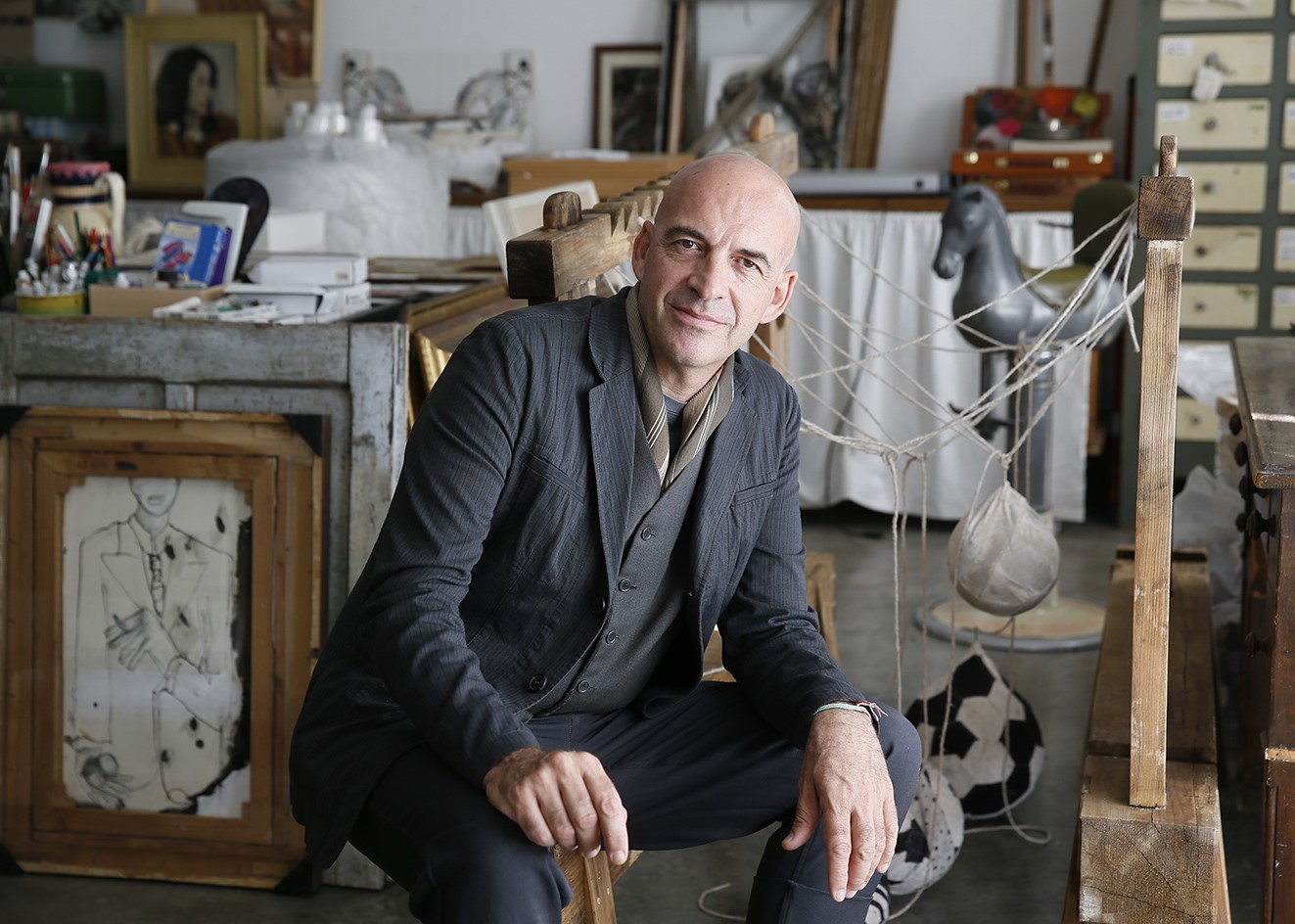
 Patricia Gatto Puglia
Patricia Gatto Puglia
Italian lifestyle and fashion: Expect the Unexpected from Antonio Marras, Italy’s fashion designer poet
- WTI Magazine #125 Mar 16, 2020
-

 Patricia Gatto Puglia
Patricia Gatto Puglia
There’s no putting the work of Italian fashion designer Antonio Marras – or the designer himself for that matter – into a neat box. Marras is as eclectic as he is brilliant. He is known as one of the most intellectual of the Italian designers, adept at weaving poetry, literature, cinema, music, and the visual arts into his collections, including traces of his cherished Sardinian heritage whenever possible.
Storyteller extraordinaire
He is a man with the spirit of a poet and the drama of a storyteller who stages his fashion shows – each one an emotional journey -- as theater. Each connects to a whimsical tale. His Fall 2018 show told the story of immigration, authored by his wife Patrizia, his business partner and lifelong muse. The story is based loosely on the miniaturist painter John (originally Jean) Marras born in France in 1772 who emigrates to the U.S. The story then diverges from history and has John traveling to Sardinia where he has an affair with a beautiful Sardinian woman before leaving Europe. The lovers part. The next chapter of the three-episode story follows John on his passage to the U.S.; the third features his arrival. It was an epic undertaking and very well received. The acting and the staging were standouts as were the clothes: mixed textures, strong contrasts of techniques, gauzy embellishment against precious fabrics that somehow worked.
Maria Lai, mentor extraordinaire
Marras dedicated this February’s showing, Fall 2020, to another significant woman in his life, the late Maria Lai, an influential Sardinian artist who was a friend, mentor and inspiration to Marras until her death in 2013 at age 94. Lai had worked predominantly in paint, but from the 1960s forward, she abandoned painting and started to work largely with fabric and thread – a natural link to Marras’ 2020 collection that told the story of a Jana. The Janas are the legendary Sardinian fairies said to inhabit the domus caves across the island and known to spin with threads of gold and silver. In Marras’ show, the Jana travels to London only to return to Sardinia with a boyfriend and an obstinate sewing machine, but not before enjoying Punks and New Romantics in 1980s London. She transports that new culture (Marras loves culture-hopping) and the uncontrollable sewing machine back to Sardinia, A reviewer in Women’s Wear Daily said of the show and Marras: “He has a very specific aesthetic, one steeped in classicism yet with an artful do-over that keeps you wondering, is it melancholy or just strange? No matter. These clothes captivate... Fabric mixes, painter’s strokes, tailoring – some tony, some refined, some foppish, inside-out, deconstructed and sprinkled with Swarovski crystals.”
Marras and Lai on exhibit
Marras and Lai shared a strong artistic bond: Lai was a sewer and artist and raconteur whom Marras credits as having introduced him to the art world. Marras has said: “She (Lai) told me she met me as a child and rediscovered me as an artist.” Lai was recently the subject of a retrospective in 2019 at Maxxi, the national museum of contemporary art in Rome, called Holding the Sun by the Hand. Currently, the work of both Lai and Marras is on display at the Museo Nazionale di Matera until May 4, 2020. Marras has also been the subject of several museum exhibitions, notably Antonio Marras: Nulla dies sine linea. Life, diaries and notes of a restless man at the Triennale Design Museum in Milan in 2016. Marras, a relentless sketcher, had more than 500 of his drawings and paintings on display as well as clothes and objects of various kinds.
Marras’ journey
Curious about where this fashion designer/artist/theatrical producer’s journey began? Antonio Marras was born in the seaside town of Alghero on the island of Sardinia in 1961. He studied neither art nor fashion design but rather accounting before he took over the family’s textile shop after his father’s death. Marras expanded the business into several fashion boutiques in Alghero. He was encouraged by one of his suppliers and his wife Patrizia Sardo (also a native of Alghero) to create his own fashion collection. Marras chose Piano Piano Dolce Carlotta as the label’s name, a homage to his passion for the cinema and legendary actress, Bette Davis, who starred in the Robert Aldrich 1964 movie Hush… Hush, Sweet Charlotte.
The label was launched in 1987 and became a commercial success. But Marras being Marras was restless for the next challenge. Again, with the support of his wife and that of Maria Lai, he introduced his first haute couture collection under this own name in 1996 in Rome. The collection sparked curiosity and received critical acclaim, leading Marras to launch his first prêt-à-porter collection three years later in Milan. These early collections already displayed signature elements inspired by Marras’ Sardinian heritage – elaborate embroidery and beading, precious brocades, even the ligazzo rubio, Sardinian for red thread, which Marras continues to weave figuratively and physically into each of his current collections. In an interview in Women’s Wear Daily in 2015, Marras confesses his love for elaboration: “I was born minimal, but I just can’t do it. I like simple lines, but I adore interventions, contrasts, going beyond limits, and cross-pollination. I like to see the transformation, to change things so that they become different.”
Marras was asked in 2003 to become artistic director of the French brand Kenzo created by the legendary designer Kenzo Takada. (The brand has been owned by LVMH since 1993.) Marras remained at Kenzo until 2011, but his work on his own brand had not stopped. In 2007, he launched his second line, I’m Isola Marras, a more accessible line than his signature collection. His eldest son Efisio has directed the line since 2015.
Marras may travel the world (he has seven stores worldwide: Milan, Alghero, Seoul, Salmiya in Kuwait, Dubai, and two in Moscow) but he has the deepest roots and ties to his native Sardinia where he lives with his wife and “family tribe” in a home overlooking the sea in Alghero. This is where he has his workshop that famously produces his Laboratorio and Serie Limitata lines, which are described as “not quite prêt-à-porter, not quite couture.” These are clothes that are handmade, with all of his trademark flourishes. Only a few pieces exist, but they are the starting point for the theater, art, and fashion we will all enjoy when the next Marras collection is presented, always with a red thread to hold the magic together.